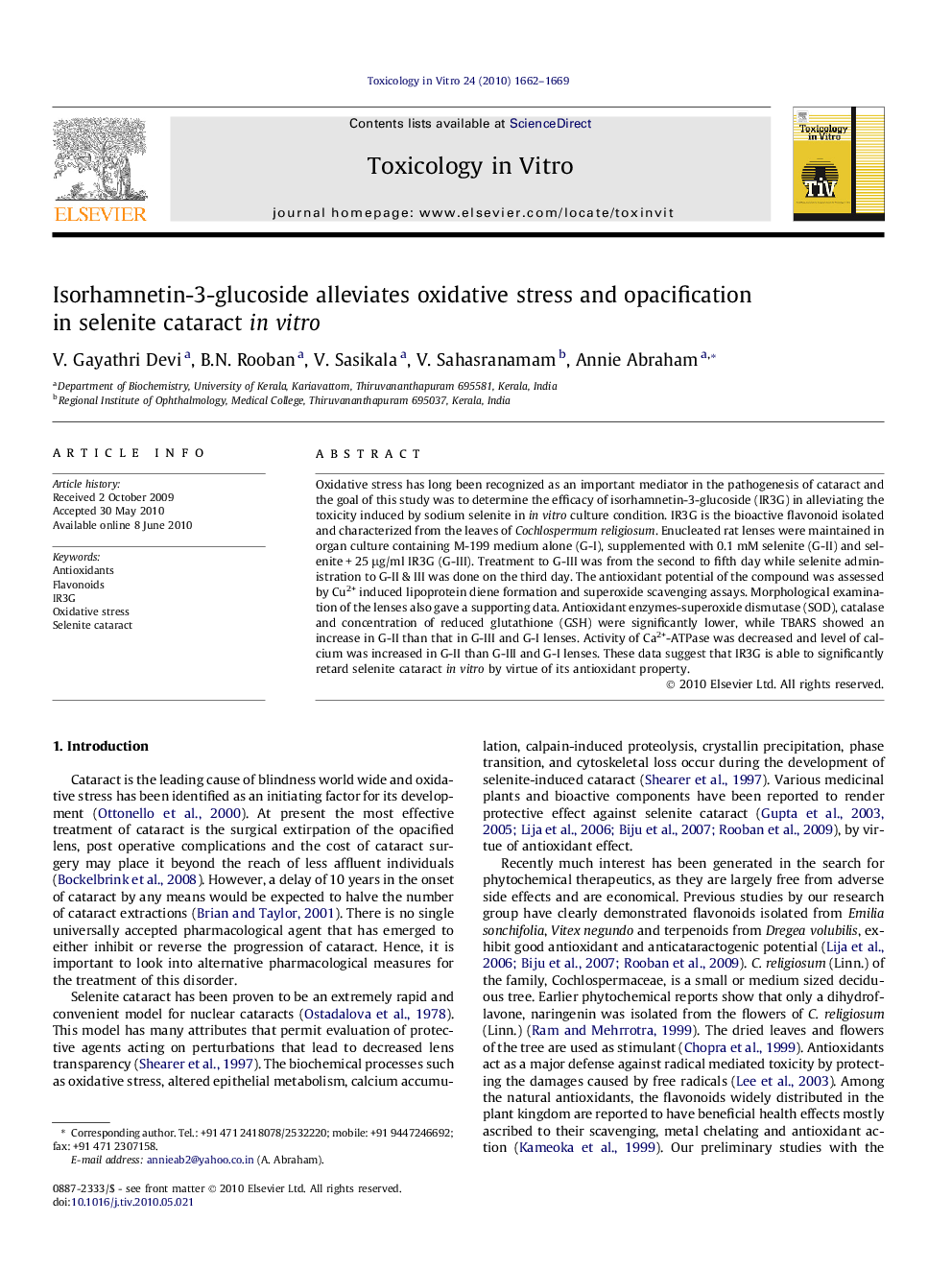| Article ID | Journal | Published Year | Pages | File Type |
|---|---|---|---|---|
| 2603210 | Toxicology in Vitro | 2010 | 8 Pages |
Oxidative stress has long been recognized as an important mediator in the pathogenesis of cataract and the goal of this study was to determine the efficacy of isorhamnetin-3-glucoside (IR3G) in alleviating the toxicity induced by sodium selenite in in vitro culture condition. IR3G is the bioactive flavonoid isolated and characterized from the leaves of Cochlospermum religiosum. Enucleated rat lenses were maintained in organ culture containing M-199 medium alone (G-I), supplemented with 0.1 mM selenite (G-II) and selenite + 25 μg/ml IR3G (G-III). Treatment to G-III was from the second to fifth day while selenite administration to G-II & III was done on the third day. The antioxidant potential of the compound was assessed by Cu2+ induced lipoprotein diene formation and superoxide scavenging assays. Morphological examination of the lenses also gave a supporting data. Antioxidant enzymes-superoxide dismutase (SOD), catalase and concentration of reduced glutathione (GSH) were significantly lower, while TBARS showed an increase in G-II than that in G-III and G-I lenses. Activity of Ca2+-ATPase was decreased and level of calcium was increased in G-II than G-III and G-I lenses. These data suggest that IR3G is able to significantly retard selenite cataract in vitro by virtue of its antioxidant property.
